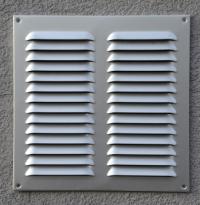
Improve Indoor Air Quality (IAQ) with a Whole-House Ventilation System
Once upon a time, people relied on natural ventilation to keep fresh air moving through their home. This means they opened windows and doors and relied on small cracks and “leaks” in the walls of their homes. Newer homes, however, especially in South Florida, are intentionally built with less air leaks to minimize heating and cooling costs and improve energy efficiency. Mechanical ventilation is a necessity to bring fresh air into the home and remove stale, toxic air. If spot ventilation and natural ventilation are not doing the job, whole-house ventilation may be the solution for you. There are four basic types of whole-house ventilation: Exhaust, Supply, Balanced, and Energy Recovery & Heat Recovery Ventilators. Exhaust ventilation is not appropriate for hot climates like South Florida because it draws moist outdoor air into the home, but the three other options offer ventilation benefits for hot and humid weather such as ours.
Supply Ventilation
Using a fan to pressurize your home, supply ventilation draws outside air into the home while it filters and dehumidifies it. Air is allowed to leak out through small cracks in the home, range and bathroom fan ducts, and any intentional vents that may exist. Supply ventilation systems are fairly simple and inexpensive to install, and work well in hot or mixed climates. The drawback is increased cooling and heating costs.
Balanced Ventilation
Balanced ventilation systems both take in and exhaust roughly equal amounts of air into and out of the home. They also filter pollen and dust from the outdoor air before introducing it into the home. A balanced ventilation system is more expensive to install and operate because they use two fan and duct systems—one for fresh air supply and one for exhaust.
Energy Recovery Ventilation Systems
Energy Recovery Ventilators control whole-house ventilation while decreasing energy loss. They also reduce heating and cooling costs. In the winter an energy recovery ventilation system transfers heat from the warm interior exhaust air to the cool outside air being taken into the home. In summer, inside air cools the warmer outside supply air coming into the house.
There are two types of energy recovery ventilation systems: Energy-Recovery Ventilators or enthalpy-recovery ventilators (ERV) and Heat-Recovery Ventilators (HRV). Both ventilation systems use a heat exchanger, fans to push air through the system, and controls. Most energy recovery ventilation systems offer central, whole-house ventilation, using their own dedicated ductwork or share the existing duct system. Some energy recovery ventilators are smaller, wall- or window-mounted ventilators.
The difference between an energy-recovery ventilator (ERV) and a heat-recovery ventilator (HRV) is the way the heat exchanger operates. The heat exchanger in an energy-recovery ventilator transfers some water vapor with the heat energy, keeping the interior humidity levels more constant. In this way, the heat exchanger core stays warmer, minimizing freezing problems. A heat-recovery ventilator only transfers heat.
An energy-recovery ventilator (ERV) working in conjunction with an air conditioning system offers better humidity control than a heat-recovery ventilation system (HRV). Theoretically, some of the water vapor from the incoming air should be transferred to the air leaving the home. There is some controversy, however, about using ventilation systems at all during warm, humid weather. Some experts advise against using a ventilation system when the outdoor weather is extremely humid to maintain low indoor humidity levels.
In general, an energy recovery ventilation system can recover 70%-80% of the energy exiting the home and return it to the incoming air. In mild climates, however, the cost of the energy recovery ventilation system’s fans may exceed the energy savings provided because the supply air does not need to be conditioned.
Energy recovery ventilation systems are most cost effective where fuel costs are high and climates are extreme.
The complexity of an energy recovery ventilation system can lead to an expensive installation. To be more cost-effective, consider sharing the existing ductwork. An experienced Heating, Ventilation, and Air Conditioning expert will know the most cost-effective way to install an energy recovery ventilation system in your home. It is good practice to build a trusted partnership with your HVAC contractor because your energy recovery ventilation system needs more maintenance than other whole-house ventilation systems. Regular cleaning is a necessity to maintain efficient ventilation and heat recovery, and to prevent mold and mildew from forming on heat exchanger surfaces.
AAA Able Air Conditioning & Appliance Co. Inc. has helped South Floridians maintain healthy indoor air quality through various ventilation methods for over 30 years. Our knowledgeable and friendly staff can provide you the necessary guidance when considering which type of ventilation system is right for you. Contact AAA Able today for all your ventilation needs!








